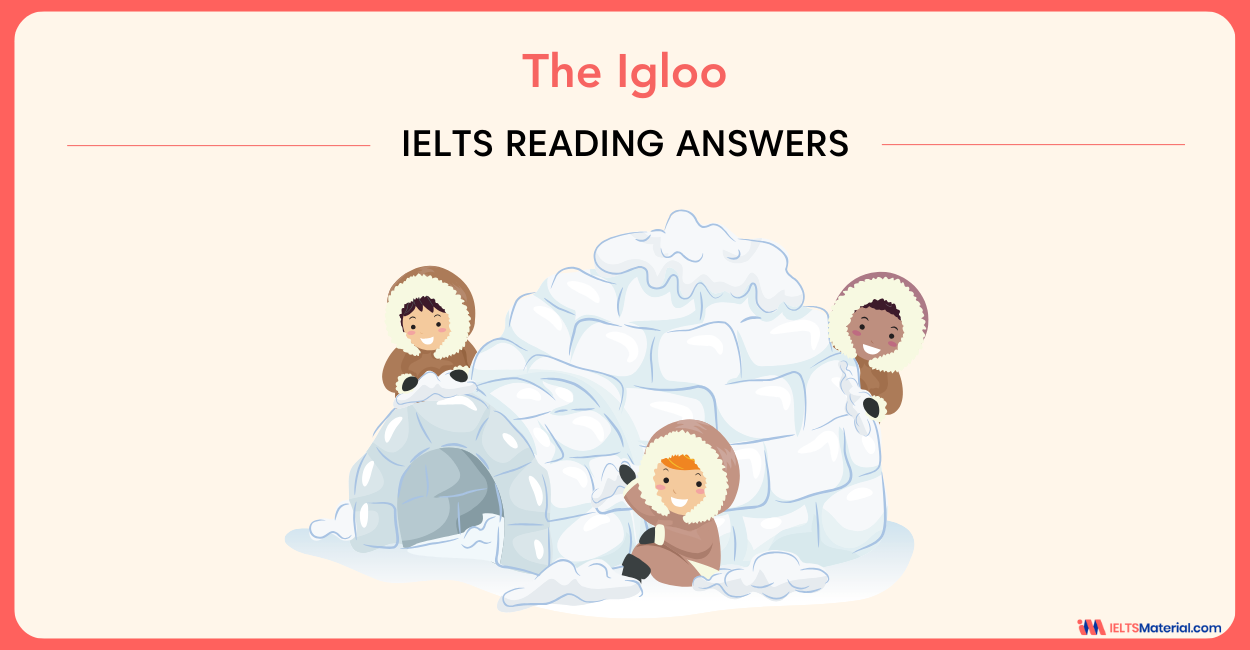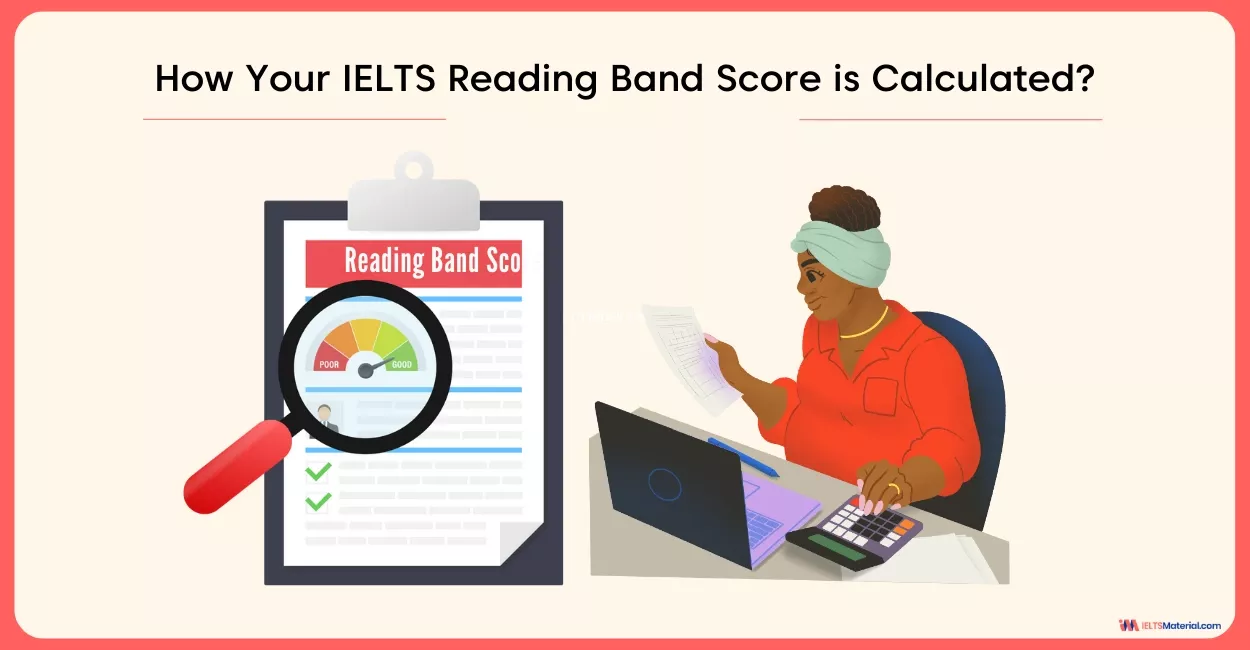New Agriculture in Oregon, US IELTS Reading Answer
Struggling with the New Agriculture in Oregon, US IELTS Reading passage? Get accurate answers, explanations, and proven strategies to boost your score!
Table of Contents

Limited-Time Offer : Access a FREE 10-Day IELTS Study Plan!
The Reading Module of the IELTS can be the top scoring category, with diligent practice. To achieve the best results in this section, you must understand how to approach and answer the different Question types in the Reading Module. By solving reading practice tests and reviewing Sample Reading Questions from past IELTS papers, you can ensure that your Reading skills are up to the mark.
The ‘New Agriculture in Oregon, US’ is an IELTS Academic Reading passage is a good resource for anyone who is preparing for the IELTS Reading test. This passage will help you understand what kind of reading passages you will encounter and the questions that you will be asked to solve. To prepare for the IELTS Reading, review the “New Agriculture in Oregon, US” IELTS Reading answers to understand the types of questions and difficulty level you’ll encounter in the IELTS exam.
The question types in this IELTS Reading Passage include:
- True/False/Not Given (Q. 1-9)
- Multiple-Choice Questions (Q. 10-13)
Reading Passage
New Agriculture in Oregon, US
A Onion growers in eastern Oregon are adopting a system that saves water and keeps topsoil in place while producing the highest quality “super-colossal” onions. Pear growers in southern Oregon have reduced their use of some of the most toxic pesticides by up to two-thirds, and are still producing top-quality pear. Range managers throughout the state have controlled the poisonous weed tansy ragwort with insect predators and saved the Oregon livestock industry up to $4.8 million a year.
B These are some of the results Oregon growers have achieved in collaboration with Oregon State University (OSU) researchers as they test new farming methods including integrated pest management (IPM). Nationwide, however, IPM has not delivered results comparable to those in Oregon. A recent U.S General Accounting Office (GAO) report indicates that while integrated pest management can result in dramatically reduced pesticide use, the federal government has been lacking in effectively promoting that goal and implementing IPM. Farmers also blame the government for not making the new options of pest management attractive. “Wholesale changes in the way that farmers control the pests on their farms is an expensive business.” Tony Brown, of the National Farmers Association, says. “If the farmers are given tax breaks to offset the expenditure, then they would willingly accept the new practices.” The report goes on to note that even though the use of the riskiest pesticides has declined nationwide, they still make up more than 40 percent of all pesticides used today; and national pesticide use has risen by 40 million kilograms since 1992. “Our food supply remains the safest and highest quality on Earth but we continue to overdose our farmland with powerful and toxic pesticides and to under-use the safe and effective alternatives,” charged Patrick Leahy, who commissioned the report. Green action groups disagree about the safety issue. “There is no way that habitual consumption of foodstuffs grown using toxic chemical of the nature found on today’s farms can be healthy for consumers,” noted Bill Bowler, spokesman for Green Action, one of many lobbyists interested in this issue.
C The GAO report singles out Oregon’s apple and pear producers who have used the new IPM techniques with growing success. Although Oregon is clearly ahead of the nation, scientists at OSU are taking the Government Accounting Office criticisms seriously. “We must continue to develop effective alternative practices that will reduce environmental hazards and produce high-quality products,” said Paul Jepson, a professor of entomology at OSU and new director of
D OSU’s Integrated Plant Protection Centre (IPPC). The IPPC brings together scientists from OSU’s Agricultural Experiment Station, OSU Extension service, the U.S. Department of Agriculture and Oregon farmers to help develop agricultural systems that will save water and soil, and reduce pesticides. In response to the GAO report, the Centre is putting even more emphasis on integrating research and farming practices to improve Oregon agriculture environmentally and economically.
E “The GAO report criticizes agencies for not clearly communicating the goals of IPM,” said Jepson. “Our challenge is to greatly improve the communication to and from growers, to learn what works and what doesn’t. the work coming from OSU researchers must be adopted in the field and not simply languish in scientific journals.”
F In Oregon, growers and scientists are working together to instigate new practices. For example, a few years ago scientists at OSU’s Malheur Experiment Station began testing a new drip irrigation system to replace old ditches that wasted water and washed soil and fertilizer into streams. The new system cut water and fertilizer use by half kept topsoil in place and protected water quality.
G In addition, the new system produced crops of very large onions, rated “super-colossal” and highly valued by the restaurant industry and food processors. Art Pimms, one of the researchers at Malheur comments: “Growers are finding that when they adopt more environmentally benign practices, they can have excellent results. The new practices benefit the environment and give the growers their success.”
H OSU researcher in Malheur next tested straw mulch and found that it successfully held soil in place and kept the ground moist with less irrigation. In addition, and unexpectedly, the scientists found that the mulched soil created a home for beneficial beetles and spiders that prey on onion thrips – a notorious pest in commercial onion fields – a discovery that could reduce the need for pesticides. “I would never have believed that we could replace the artificial pest controls that we had before and still keep our good results,” commented Steve Black, a commercial onion farmer in Oregon, “but instead we have actually surpassed expectations.”
I OSU researchers throughout the state have been working to reduce dependence on broad-spectrum chemical spays that are toxic to many kinds of organisms, including humans. “Consumers are rightly putting more and more pressure on the industry to change its reliance on chemical pesticides, but they still want a picture-perfect product,” said Rick Hilton, an entomologist at OSU’s Southern Oregon Research and Extension Centre, where researches help pear growers reduce the need for highly toxic pesticides. Picture perfect pears are an important product in Oregon and traditionally they have required lots of chemicals. In recent years, the industry has faced stiff competition from overseas producers, so any new methods that growers adopt must make sense economically as well as environmentally. Hilton is testing a growth regulator that interferes with the molting of codling moth larvae. Another study used pheromone dispensers to disrupt codling moth mating. These and other methods of integrated pest management have allowed pear growers to reduce their use of organophosphates by two-thirds and reduce all other synthetic pesticides by even more and still produce top-quality pears. These and other studies around the state are part of the effort of the IPPC to find alternative farming practices that benefit both the economy and the environment.
Questions 1-8
Use the information in the passage to match the people (listed A-G) with opinions or deeds below.
Write the appropriate letters A-G in boxes 1-8 on your answer sheet.
NB You may use any letter more than once
A Tony Brown E Art Pimms
B Patrick Leahy F Steve Black
C Bill Bowler G Rick Hilton
D Paul Jepson
1 There is a double advantage to the new techniques.
2 The work on developing these alternative techniques is not finished.
3 Eating food that has had chemicals used in its production is dangerous to our health.
4 Changing current farming methods into a new one is not a cheap process.
5 Results have exceeded the anticipated goal.
6 The research that was done should be translated into practical projects.
7 The U.S. produces the best food in the world nowadays.
8 Expectations of end-users of agricultural products affect the products.
Questions 9-13
Do the following statements agree with the information given in Reading Passage 1?
In boxes 9-13 on your answer sheet, write
YES if the statement is true
NO if the statement is false
NOT GIVEN if the information is not given in the passage
9 Integrated Pest Management has generally been regarded as a success across the US.
10 Oregon farmers of apples and pears have been promoted as successful examples of Integrated Pest Management.
11 The IPPC uses scientists from different organizations globally
12 Straw mulch experiments produced unplanned benefits.
13 The apple industry is now facing a lot of competition from abroad.
New Agriculture in Oregon, US IELTS Reading Answer With Explanation
Check out the detailed answers for the questions given above and get an idea of how to improve your reading skills for a top IELTS Reading band score.
1 Answer: E
Question type: Matching Information
Answer location: Paragraph G
Answer explanation: Paragraph G, line 2 states, that Art Pimms, one of the researchers at Malheur comments: “Growers are finding that when they adopt more environmentally benign practices, they can have excellent results. The new practices benefit the environment and give the growers their success.” We can understand from these lines that there’s a double advantage to the new techniques. Hence, the answer is E.
2 Answer: D
Question type: Matching Information
Answer location: Paragraph C, last line
Answer explanation: In the last line of paragraph C. It is stated, “We must continue to develop effective alternative practices that will reduce environmental hazards and produce high-quality products,” said Paul Jepson, a professor of entomology at OSU. These lines indicate that the work on developing these alternative techniques is not finished. Hence, the answer is D.
3 Answer: C
Question type: Matching Information
Answer location: Paragraph C, last line
Answer explanation: The last line of paragraph C states that there is no way that habitual consumption of foodstuffs grown using toxic chemicals of the nature found on today’s farms can be healthy for consumers,” noted Bill Bowler, spokesman for Green Action, one of many lobbyists interested in this issue. These lines indicate that eating food that has had chemicals used in its production is dangerous to our health was said, Bill Bowler. Thus, the answer is C.
4 Answer: A
Question type: Matching Information
Answer location: Paragraph B, line 5
Answer explanation: Paragraph B, line 5 states that wholesale changes in the way that farmers control the pests on their farms are an expensive business.” Tony Brown, of the National Farmers Association, says. These lines indicate that changing current farming methods into a new one is not a cheap process as said by Tony Brown. Thus, the answer is A.
5 Answer: F
Question type: Matching Information
Answer location: Paragraph H, last line
Answer explanation: The last line of paragraph H states, “I would never have believed that we could replace the artificial pest controls that we had before and still keep our good results,” commented Steve Black, a commercial onion farmer in Oregon. These lines indicate that the results have exceeded the anticipated goal, as suggested by Steve Black. Thus, the answer is F.
Unlock Explanations
6 Answer: D
Question type: Matching Information
Answer location: Paragraph C, last line
Answer explanation: The last line of paragraph C stated, “We must continue to develop effective alternative practices that will reduce environmental hazards and produce high-quality products,” said Paul Jepson, a professor of entomology at OSU. These lines suggest that the research done should be translated into practical projects as said by Paul Jepson. Hence, the answer is D.
7 Answer: B
Question type: Matching Information
Answer location: Paragraph B, line 9
Answer explanation: The 9th line of paragraph B states, “Our food supply remains the safest and highest quality on Earth but we continue to overdose our farmland with powerful and toxic pesticides and to under-use the safe and effective alternatives,” charged Patrick Leahy, who commissioned the report.” These lines suggest that the U.S. produces the best food in the world nowadays, as suggested by Patrick. Hence, the answer is B.
8 Answer: G
Question type: Matching Information
Answer location: Paragraph I
Answer explanation: Paragraph I illustrates Rick Hilton, saying that the consumers are rightly putting more and more pressure on the industry to change its reliance on chemical pesticides, but they still want a picture-perfect product. Hilton is an entomologist at OSU’s Southern Oregon Research and Extension Centre. These lines suggest that the expectations of end-users of agricultural products affect the products suggested by Rick Hilton. Thus, the answer is G.
9 Answer: No
Question type: Yes/No/ Not Given
Answer location: Paragraph B, line 3
Answer explanation: The 3rd line of paragraph B states that a recent U.S General Accounting Office (GAO) report indicates that while integrated pest management can result in dramatically reduced pesticide use, the federal government has been lacking in effectively promoting that goal and implementing IPM. These lines indicate that Integrated Pest Management was not really a success across the US. Hence, the statement contradicts the information, so, the answer is No.
10 Answer: Yes
Question type: Yes/ No/ Not Given
Answer location: Paragraph C
Answer explanation: The initial lines of paragraph C states that the GAO report singles out Oregon’s apple and pear producers who have used the new IPM techniques with growing success. These lines suggest that the huge growth of apples and pears is an example of the effectiveness of integrated pest management. Thus, the statement agrees with the information, so, the answer is Yes.
11 Answer: No
Question type: Yes/No/ Not Given
Answer location: Paragraph D
Answer explanation: The introductory lines of paragraph D states that the IPPC brings together scientists from OSU’s Agricultural Experiment Station, OSU Extension service, the U.S. Department of Agriculture, and Oregon farmers to help develop agricultural systems that will save water and soil, and reduce pesticides. These lines suggest that the IPPC did not bring different organizations globally, but it brought scientists from OSU’s Agricultural Experiment Station, OSU extension service, the US Department of Agriculture, and Oregon Farmer. Thus, the statement contradicts the information, so, the answer is No.
12 Answer: Yes
Question type: Yes/ No/ Not Given
Answer location: Paragraph H, last line
Answer explanation: The last line of paragraph H states, “I would never have believed that we could replace the artificial pest controls that we had before and still keep our good results,” commented Steve Black, a commercial onion farmer in Oregon, “but instead we have actually surpassed expectations.” We can deduce from these lines that the mulched experiment has given results that are beyond the scientist’s expectations. Thus, the statement agrees with the information, so, the answer is Yes.
13 Answer: Not Given
Question type: Yes/ No/ Not Given
Answer location: Paragraph C
Answer explanation: We find a reference for apple in the introductory lines of paragraph C, which states that the GAO report singles out Oregon’s apple and pear producers who have used the new IPM techniques with growing success. Although Oregon is clearly ahead of the nation, scientists at OSU are taking the Government Accounting Office’s criticisms seriously. However, it is not mentioned anywhere in the passage that the apple industry is now facing a lot of competition from abroad. Thus, the answer is Not Given.
Want to improve your IELTS Academic Reading score? Grab Our IELTS Reading Ebook Today!
Tips for Answering the Question Types in New Agriculture in Oregon, US IELTS Reading Answers
Now let’s get started with the tips for each question type. It’ll help you understand how to approach the problem of each question type.
IELTS Reading True/False/Not Given:
True/False/Not Given questions are a type of IELTS Reading question that requires you to identify whether a statement is true, false, or not given in the passage. In order to answer them, follow the tips given below!
- The statements are presented chronologically. Move on to the subsequent sentence after determining the first solution.
- Beware of terms that could subtly alter the meaning of the phrase. For example, many, some, never, few, all, always, etc.
- Avoid spending too much time on a single question. Mark it Not Given if you are totally unable to locate one.
IELTS Reading Multiple Choice Questions (MCQs)
In the IELTS Reading section, multiple-choice questions require you to select the correct answer from a list of options. These questions assess your understanding of specific details and overall comprehension of the passage.
Tips for Multiple Choice Questions
- Read the Questions First: Before diving into the passage, read the questions to understand what information to look for.
- Identify Keywords: Highlight or underline keywords in the questions and answer options to help you locate relevant information in the passage.
- Skim and Scan: Quickly skim the passage to get a general sense of its content, then scan for the keywords or phrases related to the questions.
- Eliminate Incorrect Options: Narrow down your choices by eliminating clearly incorrect answers to improve your chances of selecting the correct one.
- Refer Back to the Passage: After making a selection, always double-check the passage to confirm that your answer aligns with the information provided.
Check More IELTS Reading Answers
Practice IELTS Reading based on question types

Start Preparing for IELTS: Get Your 10-Day Study Plan Today!
Explore other Reading Topics

Kasturika Samanta

Kasturika Samanta

Kasturika Samanta

Kasturika Samanta
Recent Articles

Nehasri Ravishenbagam

Haniya Yashfeen

Haniya Yashfeen

Haniya Yashfeen




Post your Comments